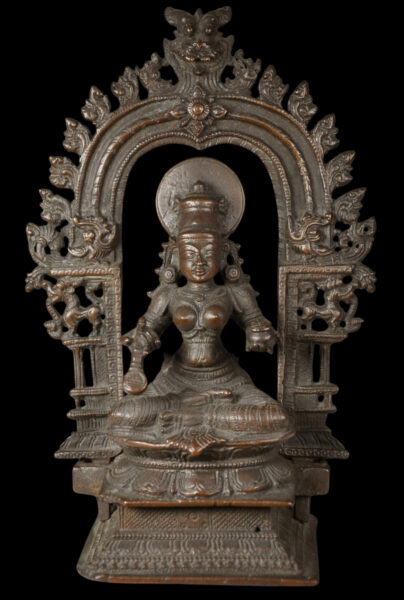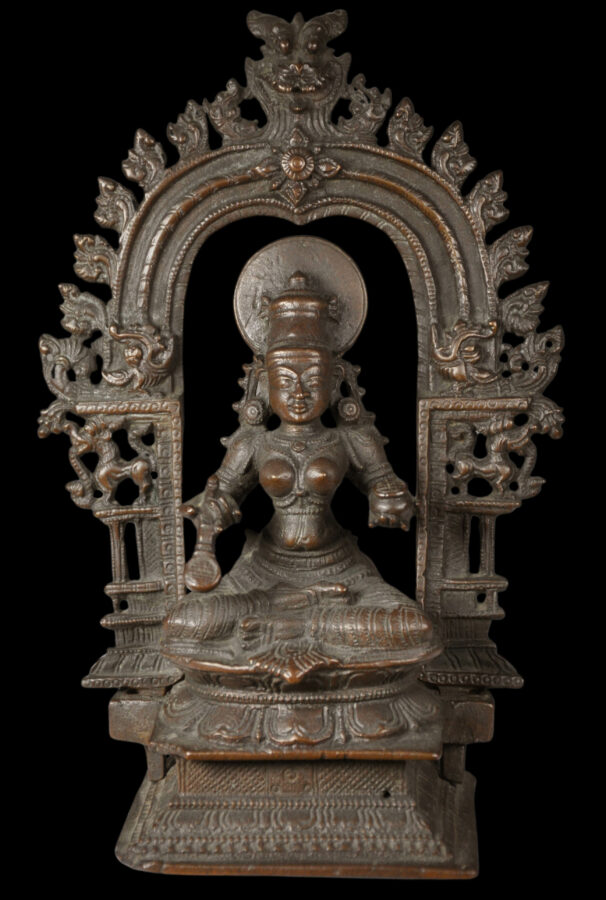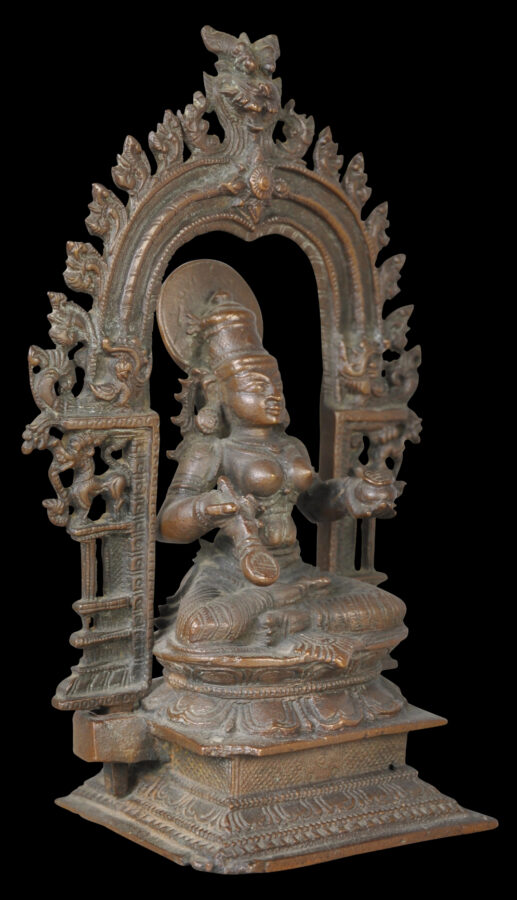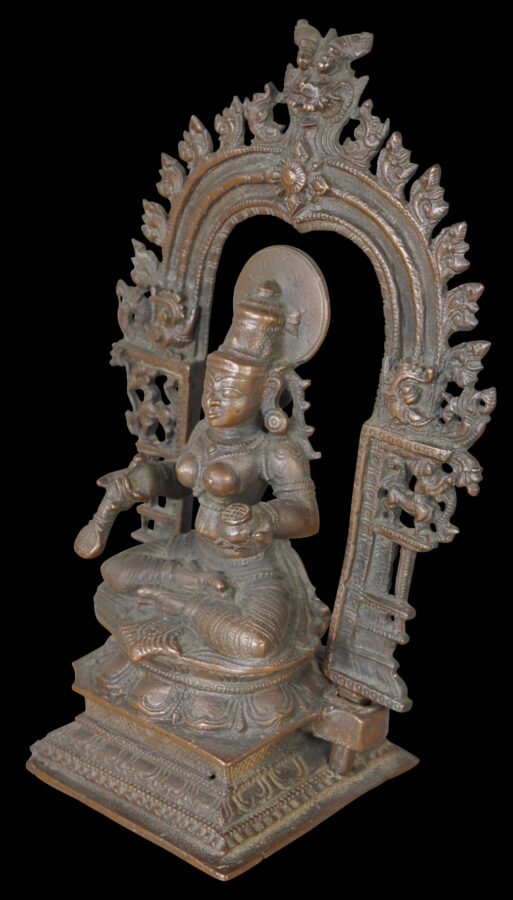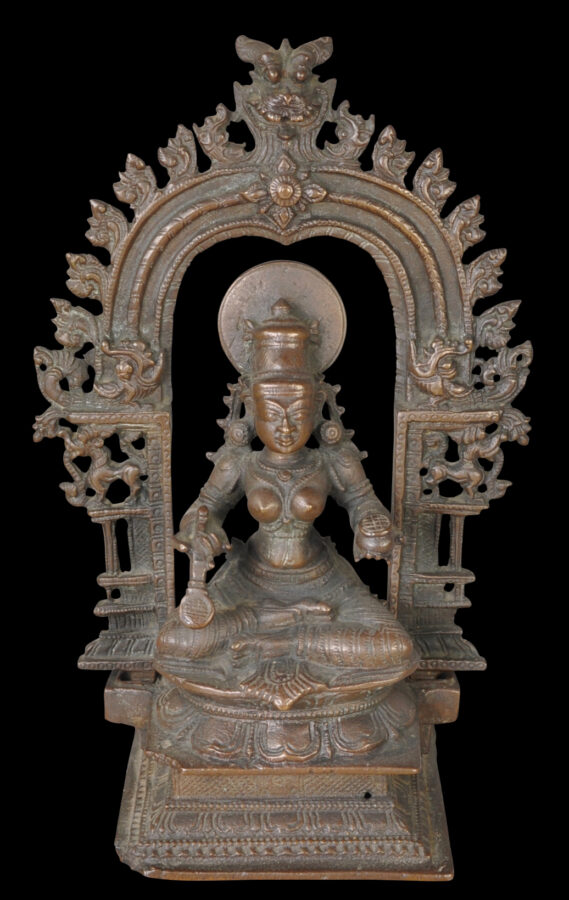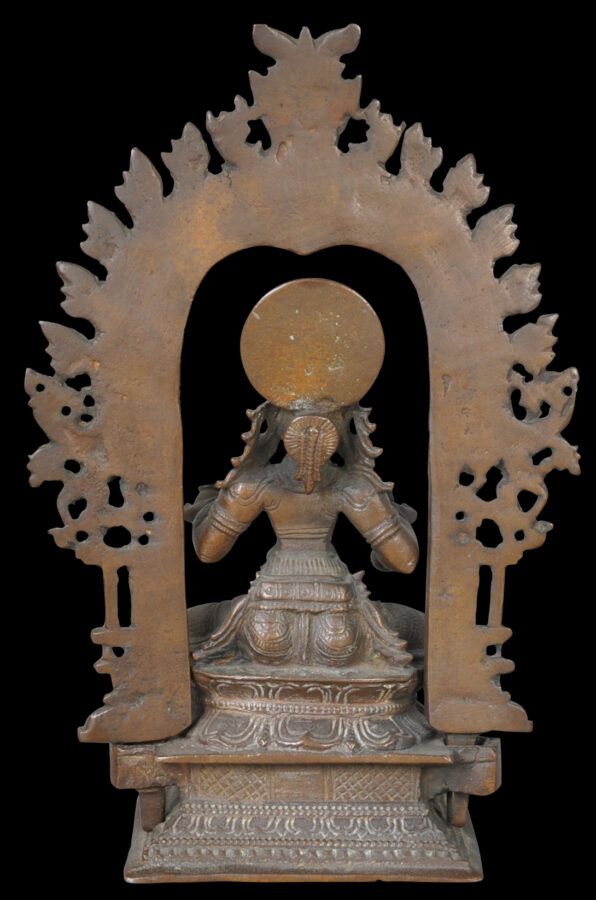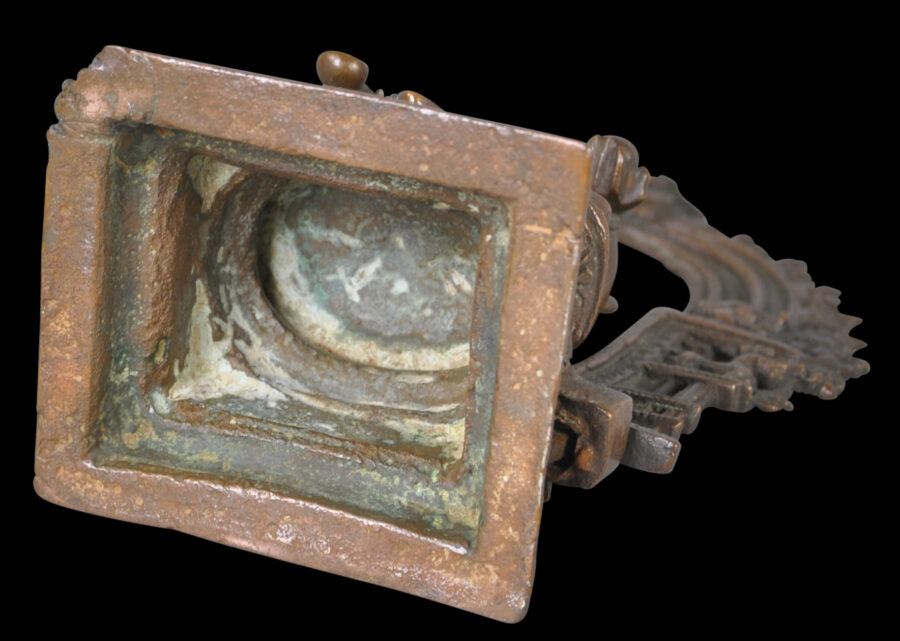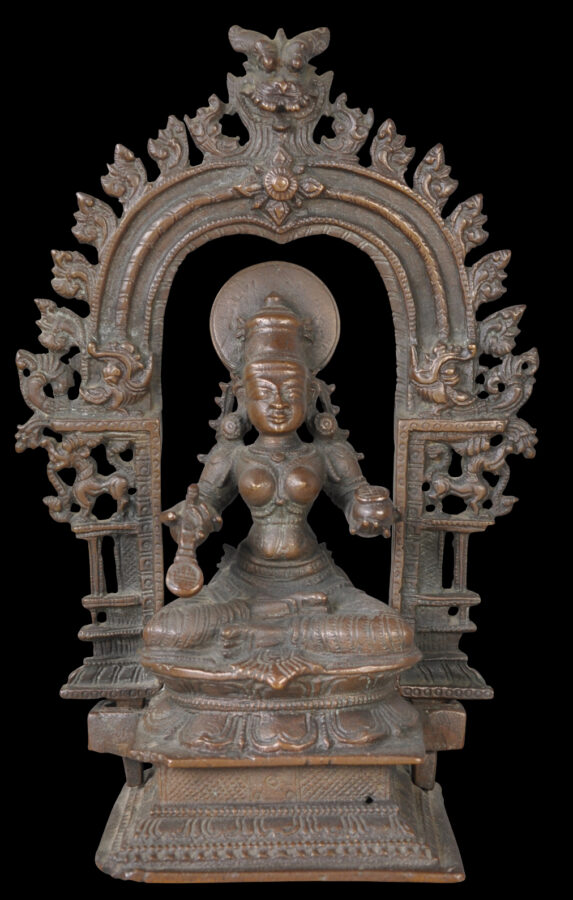Annapurna, a manifestation of Parvati, the wife of Shiva, is the goddess of cooking, plenty and nourishment. Literally, ‘Annapurna’ means ‘she who is full of food.’
This finely detailed version of the goddess is shown seated, cross-legged, on a double-lotus cushion atop a tiered, rectangular platform cast with fine lotus petals. A tall and elaborate arched detachable aureole, or backing plate is behind. It is pierced and cast with two yalis at shoulder height, followed by two makara figures above them. The aureole is flaming, but unusually the flames comprise more makara heads. The aureole is topped with a kurtimukha protective mask.
Annapurna has a high chignon atop her head with a solar discus behind, ribbons or hair curls falling to her shoulders, large, round earrings, chest cords, and a striped dhoti.
She holds a cooking ladle in her right hand and a small cooking pot filled with rice in her left. As mentioned, Annapurna is the Hindu goddess associated with cooking, food and nourishment and so her identifying attributes are a large spoon or ladle and sometimes a cooking pot as well.
The deity is particularly revered in the pilgrimage city of Benares (Varanasi) on the Ganges, and her large ladle is associated with feeding pilgrims.
Images of Annapurna often are cast in brass rather than bronze and are relatively crude. Possibly this is because small images of the deity were kept by women on small altars in their kitchens, given Annapurna’s associations with cooking. But this example however, is large, more elaborate, and more finely cast than most, and most probably was reserved for a wealthy household’s primary altar.
There are old, small losses to the corner of the dais or throne platform on the left side, but otherwise the bronze is in very good condition with a pleasing chocolate-brown patina. It is very well cast with much fine detail.
References
Aryan, K.C., Folk Bronzes: Of North Western India, Rekha Prakashan, 1973.
Blurton, T.R., Hindu Art, The British Museum Press, 1992.
Dursum, B., et al, Change and Continuity: Folk and Tribal Art of India, Lowe Art Museum, University of Miami, 2004.
Weber, J., et al, Sur la Routes des Indes: Un Ingenieur Francais dans le Tamil Nadu, Somogy Editions d’Art, 2013.


